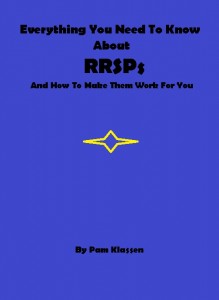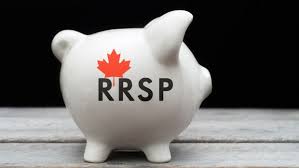 Many of you who have already browsed my blog in the past know that I have written many articles about different topics relating to RRSPs. Due to my husband’s coaxing, I decided to try to write a short e-book on the topic so that it would be a useful reference for folks who were told they need to contribute to an RRSP but really have no idea what RRSPs are or how they work.
Many of you who have already browsed my blog in the past know that I have written many articles about different topics relating to RRSPs. Due to my husband’s coaxing, I decided to try to write a short e-book on the topic so that it would be a useful reference for folks who were told they need to contribute to an RRSP but really have no idea what RRSPs are or how they work.
Topics included in my 16 page e-booklet include:
- What is an RRSP?
- What are the benefits of contributing to an RRSP?
- What are the eligibility requirements for opening an RRSP?
- How much should I contribute to my RRSP?
- Should I contribute to my RRSP or my TFSA?
- Should I put more into my RRSP or should I focus on paying down my mortgage?
- What should I do if I accidentally over contribute to my RRSP?
- How do RRSPs affect my taxes?
- What happens if I withdraw from my RRSP?
- What is a spousal RRSP and when should I contribute to one?
- What is the First Time Home Buyer’s Plan?
- What is the Lifelong Learning Plan?
- What investment options are available for an RRSP?
- When is the best time to take money out of my RRSP?
- What tax slips will I receive if I have an RRSP?
I also included a list of recommended resources that includes links to several websites with useful articles related to the topic of retirement, TFSAs, and of course, RRSPs.
If you are interested in checking out my new e-booklet, you can purchase it on Amazon.com.


1 Comment
I’ve had the same problem for years. My aaopprch to this has been to rebalance primarily by adding funds to whatever asset class is falling behind, as opposed to doing much selling. I realize, however, that this is not suitable for someone primarily withdrawing funds.As for US dollars, I believe Questrade allows one to hold US dollars in an RRSP and I know that TD Waterhouse can do “wash trades” involving a US-dollar money market fund, but it has to be done over the phone.